|
CREEDMOOR:
OPENED: 1/8/1873, TO SERVICE THE RECENTLY FORMED (1871) NATIONAL RIFLE
ASSN.'S (NRA) NEWLY OPENED NATIONAL RIFLE RANGE BUILT, IN CONJUNCTION
WITH N.Y. STATE LEGISLATURE AND THE N.R.A., ON 70 ACRES OF LAND
ACQUIRED FROM A MR. CREED. 1st
INTERNATIONAL MATCH HELD AT RANGE:
1874. |
|||||
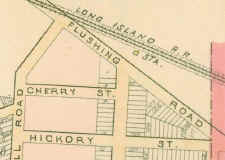 Creedmoor Station 1891 |
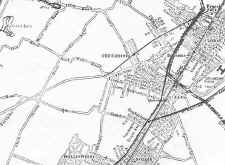 Creedmoor Station area map View NE 1906 |
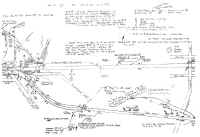 Emery map - Creedmoor MP15-16 1943 with notes added view N |
|||
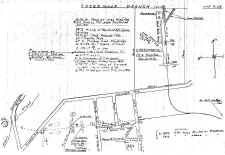 Emery map - Creedmoor Hospital 7-1958 view N |
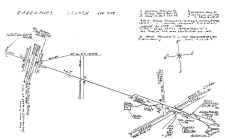 Emery map - Creedmoor Hospital Branch - NW from the LIRR Main 7/1958 |
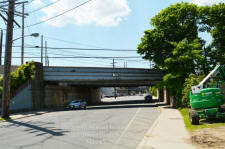 Plainfield Ave bridge - View S 5/17/2021 Photo/Archive Dave Morrison |
|||
|
|
|||||
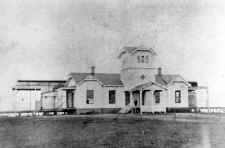 Hinsdale Station and covered train shed Central Railroad View N c.1873 Archive: Art Huneke |
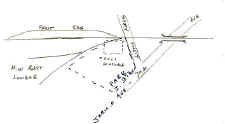 Hinsdale Station Central Railroad map c.1873 Archive: Art Huneke |
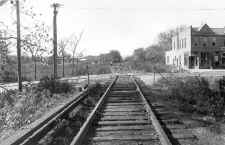 Ex-Hinsdale Station site at Little Neck Parkway view NW 1931 Archive: Art Huneke |
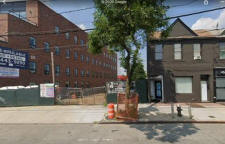 Ex-Hinsdale Station site at Little Neck Parkway view NW 2020 |
||
| Central Railroad of Long Island Creedmoor Branch Stations | |||||
|
CENTRAL JUNCTION CRR OF LI OPENED: 7/1873, ABANDONED: (CREEDMOOR) 4/30/1879 |
|||||
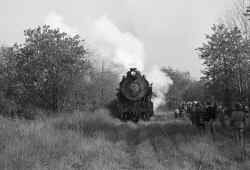 Creedmoor Branch H10s #107 Railfan Extra 10/26/1952 Archive: Dave Keller |
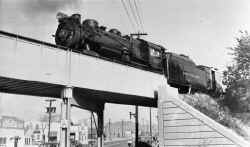 Creedmoor Branch H10s #107 Railfan Extra Jericho Turnpike Trestle, Floral Park View E 10/26/1952 Archive: Dave Keller |
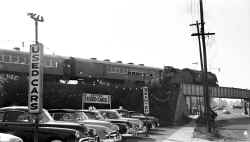 Creedmoor Branch H10s #107 Railfan Extra Jericho Turnpike Trestle, Bellerose View W 10/26/1952 Archive: Dave Keller |
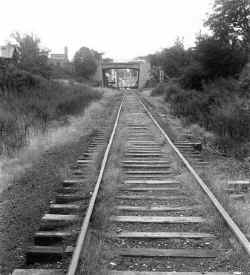 Creedmoor Branch ROW tracks at Cross Island Parkway Bellerose View E 4/28/1957 (Edwards-Keller) |
||
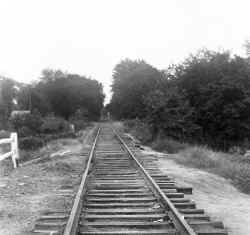 ROW tracks at Cross Island Parkway, Bellerose View W 4/28/1957 (Edwards-Keller) |
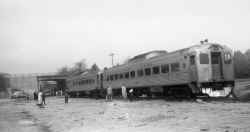 Creedmoor Branch RDC1, 2 Railfan Extra Cross Island Parkway, Bellerose View NW 4/28/1957 (Edwards-Keller) |
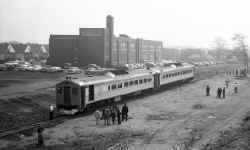 Creedmoor Branch RDC1, 22 Railfan Extra View NE from Cross Island Parkway, Bellerose 4/28/1957 (Edwards-Keller) |
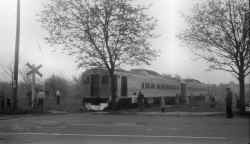 Creedmoor Branch RDC1, 2 Railfan Extra Hillside Ave. crossing Queens Village 4/28/1957 (Edwards-Keller) |
||
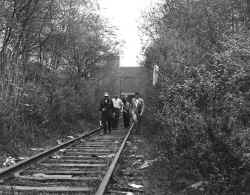 Creedmoor Branch ROW tracks with Railfans Queens Village 4/28/1957 Archive: Dave Keller |
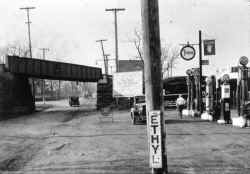 Creedmoor Branch old trestle over Jericho Turnpike before road widening Floral Park View W 12/1929 Archive: Dave Keller |
||||
| Creedmoor Rifle Range | |||||
|
The range was established after
the New York Legislature and the newly formed National
Rifle Association (NRA) combined in 1872 to acquire 70 acres of
farmland from a Mr. Creed for long-distance rifle shooting and the
holding of shooting competitions. The range officially opened on
June 21, 1873. The Central
Railroad of Long Island established a railway station nearby,
with trains running from Hunter's
Point, with connecting boat service to 34th
Street and the East
River, allowing access from New York City. In 1873 the NRA and the
Creedmoor range benefitted greatly from the substantial publicity
created when the Irish Rifle team, in that year the British champions
having won the Elcho
Shield, challenged the NRA to a rifle shooting match at
Creedmoor the following year. The Amateur Club accepted the challenge
and won by a small margin. In 1874 the Leech
Cup was presented to the Amateur Rifle Club by Major Arthur
Blennerhassett Leech, Captain of the visiting Irish Rifle Team and is
thus the oldest trophy offered today in competitive target shooting in
the In 1875 the Wimbledon
Cup was presented to the NRA by the British team on the
occasion of their shooting at International
competitions, organized by the NRA, were held annually at the range
until 1891, after which a decline in interest and support caused them
to be moved to the range at the National Guard Camp, Sea
Girt, |
|||||
| Fuse Box | |||||
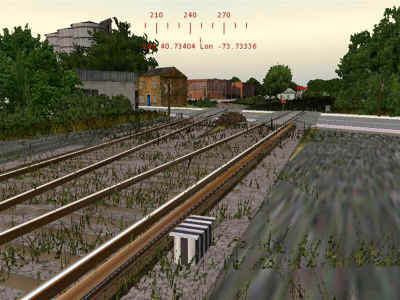 Frank R. Smith Coal |
Train Simulator screen shoot is looking west at the Frank R. Smith Coal siding, 235th St & 88th Ave. about 1/2 west of the Creedmoor Hospital siding switch. Designer/Research: Vince Cockeram |
||||
|
|
|||||